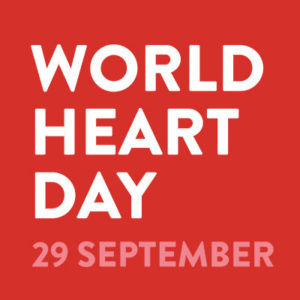- Estimated 8-10 million Heart Failure patients in India
- 23% of Heart Failure patients die within one year of diagnosis
- 1/3 of Heart Failure patients in India die in the hospital within 6 months of treatment
- Ischemic heart disease is the main reason for Heart Failure in Indian patients
September 2018: As per a recent study published by the global medical journal, Lancet, the total number of deaths due to cardiovascular diseases in India increased to 28% in 2016, from 15% in 1990. Heart Failure is the leading cause of mortality amongst these CVDs, with close to 23% patients succumbing within one year of their diagnosis.
On World Heart Day, medical experts from the country have urged to pay more attention to the signs and symptoms of heart diseases, to ensure early diagnosis and treatment, which can help bring down the number of associated deaths.

Close to 1/4th of the global disease burden for ischemic heart disease is accounted from India[8]. The disease is characterized by reduced supply of blood to the heart. Ischemic heart disease is the main reason for Heart Failure in Indian patients[9]. Ischemic heart disease has gripped Punjab, Maharashtra, Kerala and Tamil Nadu, followed by Himachal Pradesh and West Bengal[10].
According to experts, enough attention has not been paid to Heart Failure and thus the condition has been silently and rapidly killing patients and leading to repeated hospitalizations.
“Heart failure is a chronic disease where the heart muscle responsible for pumping blood, weakens overtime. Around 23% of heart failure patients die within one year of diagnosis. At Ruby Hall Clinic, we witness at least two heart failure patient admissions every day to our critical care unit. Most of these patients are at an advanced stage of the disease. Therefore, it becomes imperative to recognize the early symptoms of heart failure to ensure timely treatment which in turn can help reduce hospitalizations and prolong the life span of patients,” says Dr. Shirish Hiremath, Immediate Past President Cardiological Society of India (CSI) and Director, Cath Lab, Ruby Hall Clinic.
“Heart failure patients are graded as per the severity of their condition and symptoms. Patients who can continue performing their routine activities, like going to office and doing household work are identified as Grade 2 patients. The ones who are stable due to medications and lifestyle modifications are Grade 3 patients. Patients that need to be hospitalized frequently due to their symptoms are Grade 4 patients. Of all the patients that visit me every month, 20% are Grade 2 and 3 patients and can manage their condition by adhering to medications and lifestyle modifications,” added Dr. Hiremath.
Understanding Heart Failure
Despite the name, experts clarified that ‘Heart Failure’ does not mean the heart is quitting. It means that the weakened heart muscle is not pumping blood efficiently enough to meet the oxygen and nutritional demands of an individual’s body.
Risk factors for Heart Failure include a history of ischemic heart disease, coronary artery disease (CAD), heart attack, high blood pressure, heart valve disease, cardiomyopathy, lung disease, diabetes, obesity, alcohol and drug use and family history of heart diseases.
Common symptoms that should raise an alarm, include shortness of breath, swelling in the ankles, or legs or abdomen, need for elevated pillows while sleeping to breathe properly and unexplained fatigue while performing routine activities.
Dr. K. Sarat Chandra, President, Cardiological Society of India, said, “With the increasing burden of Heart Failure in India and the associated high death rates, it is necessary to recognize it as a public health priority. Most often, patients are diagnosed when they are first hospitalized with aggravated symptoms or associated cardiac event. Therefore, there is an urgent need to raise mass awareness about the symptoms of heart failure.”
Rising incidence in youngsters
The country has undergone rapid epidemiological and demographic transitions in the last 2 decades. As a result, the burden of Heart Failure in India has increased by nearly 140% from 1990 to 2013.
With increasing lifestyle deviation, spiking stress, salt, sugar, fat consumption and air pollution, its catchment area is ominously increasing, taking even youngsters in its grip. The mean age of heart failure patients in India is 59 years which is approximately 10 years younger than patients in US and Europe.
Data from low-income and middle-income countries like India suggested that mortality in patients with heart failure in these countries is greater than that in high income countries. The marked variation in mortality is attributed to low awareness, economic disparity, ease of access to high quality healthcare facilities, environmental and genetic factors.
Timely diagnosis of the condition and lifestyle modifications coupled with advanced treatment management protocols are required to curb its growing incidence reducing the associated hospitalization, mortality and morbidity.
